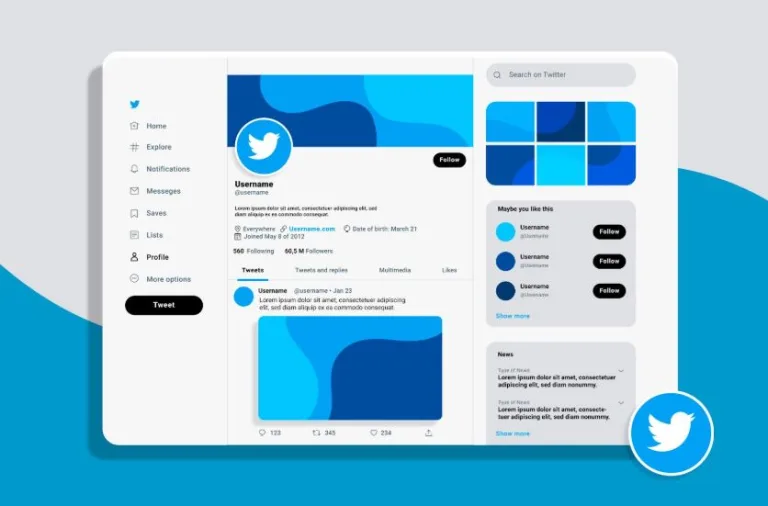What’s Included in a Virtual Memorial Service Guide?
Losing a loved one is one of the most difficult experiences we face in life. For families and friends, gathering to honor that person’s memory brings comfort, closure, and connection. Yet in today’s world, circumstances sometimes make it difficult — or even impossible — for everyone to be physically present at a traditional service. This is where virtual memorials have emerged as a meaningful alternative, bridging distance and ensuring that no one is excluded from the opportunity to say goodbye.
A thoughtfully planned virtual memorial service guide ensures that every aspect of the online gathering is seamless, respectful, and heartfelt. From technology setup to creating personalized tributes, such a guide helps families navigate details they may not have considered while grieving.
In this blog, we’ll walk through everything that’s typically included in a virtual memorial service guide, offering families and organizers clarity, confidence, and inspiration during a challenging time.
Why Virtual Memorial Services Matter
Virtual memorial services aren’t simply a digital substitute for in-person gatherings — they carry their own unique strengths. They allow loved ones across states or even countries to participate, provide recordings for those who can’t attend live, and often include interactive features like chat rooms, photo sharing, or even breakout sessions for smaller group reflections.
At their core, these services ensure that everyone touched by the person’s life has the chance to come together, share memories, and find comfort — even from afar. A well-structured guide makes this possible, balancing technology with heartfelt touches that make the service personal and meaningful.
What Exactly Is a Virtual Memorial Service Guide?
A virtual memorial service guide is a detailed resource — sometimes provided by funeral homes, event planners, or virtual memorial platforms — that outlines the steps, tools, and options for hosting an online remembrance.
This guide typically includes:
- Technology Setup Instructions: Platforms, equipment, and tips for reliable streaming.
- Service Structure: Suggested order of events and timing.
- Personalization Ideas: Ways to incorporate stories, images, music, and rituals.
- Guest Involvement: Guidelines for how attendees can participate virtually.
- Logistics and Communication: Invitations, time zones, and reminders.
- Aftercare Options: Recordings, memorial websites, or ongoing support.
Think of it as a roadmap, ensuring nothing gets overlooked during an already emotional and overwhelming time.
Technology and Platform Setup
One of the most critical components in any virtual memorial is technology. The guide typically outlines:
Choosing the Right Platform
- Zoom: The most common choice, offering breakout rooms and recording options.
- YouTube Live or Facebook Live: Ideal for larger audiences who may not need to interact directly.
- Specialized Memorial Platforms: Services dedicated to hosting virtual tributes with added features like memory walls and digital guestbooks.
Technical Considerations
- Internet speed requirements.
- Camera and microphone recommendations.
- Backup options in case of tech issues.
The goal is to minimize glitches so that families can focus on honoring their loved one without worrying about technology.
Structuring the Service
Just like an in-person memorial, a virtual service benefits from a clear structure. A virtual memorial service guide often provides a sample order of events, which may include:
- Welcome and Introduction: Led by a host, officiant, or family member.
- Opening Music or Prayer: A meaningful way to set the tone.
- Eulogies and Reflections: Shared by family, friends, or colleagues.
- Multimedia Tributes: Slideshows, video clips, or recordings.
- Open Sharing: Attendees may speak, type in the chat, or submit memories ahead of time.
- Closing Remarks and Rituals: Final words, a moment of silence, or symbolic gestures (such as lighting candles at home).
This structure ensures flow, prevents confusion, and allows every participant to feel included.
Personalization and Tributes
One of the most healing parts of any memorial is personalization — celebrating the individual for who they were. A guide usually highlights ideas such as:
- Photo and Video Montages: Sharing images from different stages of life.
- Favorite Music: Incorporating songs that reflect the person’s tastes or personality.
- Readings: Poems, religious texts, or meaningful quotes.
- Symbolic Actions: Coordinated rituals like lighting candles or planting flowers in different locations simultaneously.
- Digital Guestbooks: Online spaces where attendees leave written messages and photos.
These personal touches transform the service from a formal event into a true reflection of the life being honored.
Guest Involvement
A virtual service thrives when participants feel engaged rather than passive. The guide often includes:
- Instructions for Speaking: Clear directions on how attendees can request to share live.
- Chat Features: Encouraging guests to type messages, memories, or blessings during the service.
- Interactive Tributes: Online polls (e.g., favorite memories) or group slideshows.
- Breakout Sessions: Small-group “rooms” for intimate sharing after the main service.
Including guests in meaningful ways helps everyone feel connected despite physical distance.
Invitations and Communication
Planning a virtual service involves more than setting a date. Communication is key to ensuring attendance and participation. A virtual memorial service guide typically covers:
- How to Send Invitations: Email, social media, or mailed cards with service links.
- Time Zone Considerations: Critical when attendees live in different states or countries.
- RSVP Tracking: Tools for managing responses.
- Reminders: Automated reminders with links to the service.
These steps reduce confusion and ensure guests feel informed and prepared.
Accessibility Considerations
To make the service inclusive, guides often recommend:
- Closed Captioning for those with hearing difficulties.
- Recording the Service for people who cannot attend live.
- Multi-Language Options if family and friends speak different languages.
Inclusivity ensures no one feels left out of the tribute.
After the Service
A virtual memorial doesn’t end when the livestream closes. Many guides include options for continuing the tribute:
- Recordings: Families can keep a permanent copy of the service.
- Memorial Websites: Online spaces where photos, videos, and stories are collected.
- Follow-Up Gatherings: Virtual check-ins or anniversary services.
- Keepsakes: Digital photo albums, printed transcripts of chat messages, or commemorative items.
Aftercare helps families and friends stay connected while continuing to honor their loved one’s legacy.
Advantages of a Virtual Memorial Service
A guide doesn’t just explain logistics — it also reassures families of the benefits:
- Accessibility: Loved ones can attend regardless of distance, health, or travel restrictions.
- Affordability: Reduced costs compared to traditional venues.
- Flexibility: Families can host services sooner, without waiting for travel coordination.
- Recording Option: Attendees can revisit the service later for comfort.
These benefits remind families that while virtual services are different, they can be equally meaningful.
Tips for Families Planning a Virtual Service
Many guides include practical advice, such as:
- Rehearse technology with speakers ahead of time.
- Have a backup host in case of technical difficulties.
- Encourage guests to log in early to test sound and video.
- Provide instructions for virtual etiquette (muting when not speaking, using chat respectfully).
These tips minimize stress and create a smoother experience for all.
Choosing the Right Virtual Memorial Provider
Not every provider offers the same level of service. Families are encouraged to look for:
- Experience: Providers who specialize in virtual memorials.
- Technical Support: Teams available before and during the event.
- Customization: Options to personalize tributes and rituals.
- Compassionate Guidance: Staff who understand the emotional weight of planning.
A reliable provider will combine professionalism with sensitivity, ensuring families feel supported at every step.
How a Virtual Memorial Service Guide Brings Comfort
Beyond logistics, these guides play a deeper role: they bring order during a time of chaos. When grief clouds decision-making, having a structured plan helps families focus on what matters most — remembering and celebrating their loved one’s life.
By offering clarity, personalization options, and ways to include every guest, a virtual memorial service guide transforms a potentially overwhelming process into a meaningful and healing experience.
Honoring Loved Ones with Care and Connection
At its heart, a virtual memorial is about connection. It’s about ensuring that, even across miles, families and friends gather to laugh, cry, and celebrate together. A thoughtfully crafted guide takes the uncertainty out of planning, providing families with the assurance that their loved one’s life will be honored beautifully.
When you’re facing the difficult task of planning a memorial from afar, having a resource to walk you through the details can bring much-needed peace of mind. With compassion, personalization, and careful attention to detail, a virtual memorial service guide makes it possible to create a moment of togetherness that will be cherished forever.



